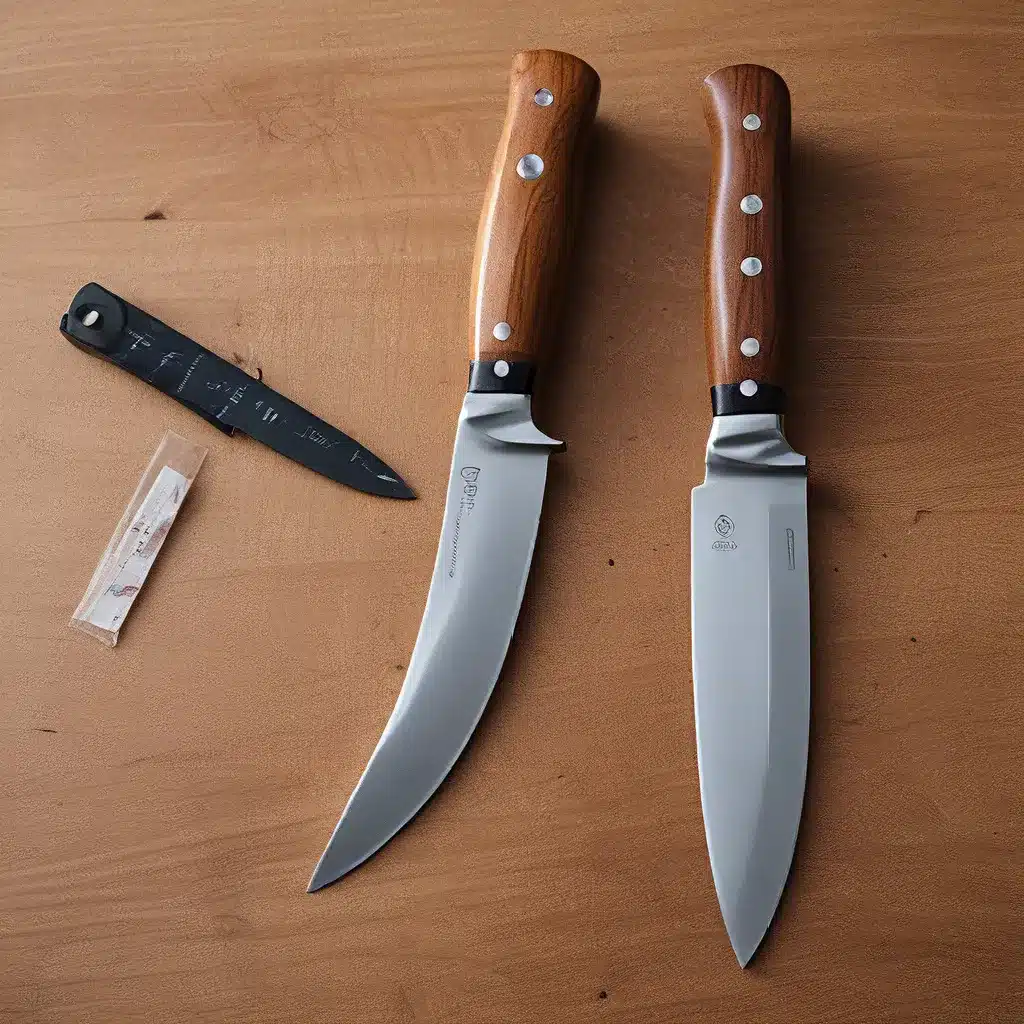
The Mystique of Knife Sharpening
Ah, the age-old art of knife sharpening – a ritual shrouded in mystery and sophistication, passed down through generations. As a self-proclaimed knife enthusiast, I’ve always been captivated by the quest for the perfect edge. From sharpening stones to honing rods, the pursuit of a razor-sharp blade has become a true passion of mine.
Recently, I had the opportunity to delve deeper into the world of knife maintenance, and I’m excited to share my findings with you. Prepare to embark on a journey of enlightenment as we explore the art of stropping – a technique that can transform even the most dull-edged knife into a precision cutting instrument.
Unraveling the Secrets of Stropping
Stropping, my friends, is the final step in the knife-sharpening process. It’s where the magic happens, where a leather strop and a micro-abrasive compound work together to hone your blade to razor-sharp perfection.
Now, I know what you’re thinking – “Leather strop? Micro-abrasive compound? What sorcery is this?” Fear not, for I shall unveil the secrets of this time-honored technique.
The leather strop is the humble yet crucial tool in this equation. Picture a strip of leather, imbued with a green compound that contains microscopic abrasive particles, or microns, measuring between 0.5 and 1 micron. These micro-abrasives are the real MVPs, working their magic on the knife’s edge to refine it to a brilliant sheen.
The Stropping Technique Unveiled
So, how does one go about this mystical stropping ritual? Allow me to guide you through the process.
First, you’ll want to place your knife on the leather strop, but here’s the twist – instead of pushing the blade forward, you’ll be drawing it backward across the surface. This alternating motion, from side to side, is the key to effectively pushing any remaining burr (that tiny metal protrusion left over from the sharpening process) along the length of the blade.
It’s crucial to maintain a similar angle to the one you used during the initial sharpening. A slightly shallow angle will result in no contact with the cutting edge, while an excessively steep angle will dull the knife. Ah, the delicate balance of it all!
One of the beauties of using a leather strop is its forgiving nature. Unlike the unyielding surfaces of ceramic or diamond plates, leather provides a bit more tolerance for variations in the stropping angle. This means you have some room to experiment and find what works best for your individual knives.
As you strop, remember to follow the entire shape of the blade, from the heel to the tip, and gradually decrease the pressure applied as you progress. Lighter pressure will contribute to a finer, more polished edge. Over time, your leather strop may dry out, affecting its effectiveness, but fear not – a simple application of petroleum jelly and a generous amount of compound can breathe new life into it.
The Moment of Truth: Testing for Sharpness
Alright, you’ve diligently stropped your knife, and now it’s time to put it to the test. Josh, the expert sharpener from the WorkSharp team, demonstrates a simple yet effective way to assess the sharpness of your blade – the paper test.
A good working edge should allow the knife to slice through paper effortlessly, but a razor-sharp edge takes it a step further. With minimal force or pressure, a knife honed to precision should be capable of push-cutting through paper, gliding through it with ease.
But wait, there’s more! For those seeking a more quantitative measurement of sharpness, Josh introduces a nifty tool called the BESS tester. This device utilizes a standard piece of filament that you cut with your knife, measuring the downward force required to make the cut. The scale on the BESS tester provides a numeric value, offering a more accurate and consistent assessment of your knife’s sharpness.
Mastering the Art of Knife Maintenance
Mastering the art of knife stropping is a testament to your dedication to the craft. It’s a journey that begins with understanding the principles and techniques involved, and evolves with practice and experimentation. Each knife may require slight adjustments in stropping angle and pressure, as every blade has its own unique characteristics.
By combining your newfound knowledge with patience and a keen eye for detail, you can transform any dull knife into a shining exemplar of sharpness. And the best part? You can put those skills to use on your favorite knives from Herman Knives, where you’ll find a wide selection of premium blades just waiting to be honed to perfection.
The Journey Continues: Knife Repair and Restoration
As our exploration of knife maintenance continues, I’m excited to share that the next step in our odyssey involves repairing damaged knives. Knives, like any well-used tool, inevitably encounter wear and tear. Chips, nicks, and broken tips can mar the once-perfect edges of our beloved blades.
In the upcoming episode, our expert sharpener, Josh, promises to share invaluable insights on how to restore damaged knives to their former glory. So, stay tuned and get ready to breathe new life into your old favorites.
Unlocking the Pinnacle of Sharpness
Stropping, my friends, holds the key to unlocking the pinnacle of sharpness. Armed with a leather strop and the knowledge of the stropping technique, you have the power to transform a dull blade into a precision instrument. The interplay between the leather and the micro-abrasive compound breathes new life into your knives, ensuring they slice effortlessly through anything in their path.
Remember, stropping is an art that requires practice and finesse. Embrace the process, experiment with different materials, and refine your technique. The rewards will be evident when you witness your knife gliding through paper with unparalleled ease.
So, step into the workshop with me, and join me on this journey of honing perfection. Now, go forth and strop with confidence! Unleash the razor-sharp potential of your knives and elevate your culinary and cutting experiences to new heights. Sharpen, strop, and conquer!


